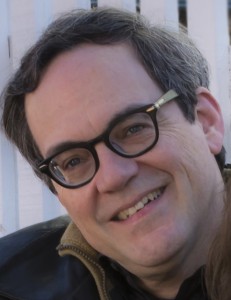 I experience three distinct stages to the process of creating each composition, which I think of as head, body, tail:
I experience three distinct stages to the process of creating each composition, which I think of as head, body, tail:
- Head – initial ideas, which may consist of pitch material, structure, extra-musical impetus, rhythms, instrumentation, or any combination of those and other elements. In this initial stage, I have to have an open, accepting mindset, uncritical, willing to try anything.
- Body – working out the flow and pacing of the composition. At this point, I have made a commitment to specific ideas, and I become deeply invested in seeing how they will play out.
- Tail – finishing touches. This is the detail stage: looking at every instant in the piece, making sure every nuance is exactly what I want it to be, and ensuring that I have communicated my intentions as accurately as possible to the performer. The mindset here is the opposite of the initial stage: highly critical, both deeply engaged and – paradoxically – distanced, not letting anything stay unless I feel fully committed to it.
These three stages call for three very different creative tasks. Taken one after another, they often cause an emotional arc that leaves me completely incapable of starting a new piece once the previous piece is completed. The reason for this reaction should be obvious: starting a new piece requires going directly from hypercritical thinking to uncritical thinking. When you aren’t conscious of that shift as you begin a new composition, you end up with a lot of false starts, pieces that can’t seem to get off the ground.
About 20 years ago, I hit on a solution to this problem. Or maybe not a solution, but a process that alleviates some of the rockiness in the road. I deliberately got into the habit of writing three pieces at once: a piece I was just starting, a piece I was in the middle of and a piece I was putting the finishing touches on. I wasn’t able to stay with that combination all the time – life does have its way of intervening – but I stuck with it pretty faithfully for many years. There were two results: first, I never hit the emotional lows that had paralyzed me previously, because I always had another composition to turn to that was well on its way whenever any piece was completed. And second (and this was even more useful, I believe), I was able to avoid creative blocks, because I was never batting my head against a single problem day after day. Instead, I could begin each compositional session by taking my psychic temperature. Did I feel like generating new material? Or was I anxious to nail down some details? Or did I want to dive deeply into some waters I had encountered the day before? Whichever one suited my temperament at that moment, I had a composition waiting to satisfy my need.

This welcome introspection brought to mind the genesis of my first composition other than a piano improvisation that I decided to notate in order to avoid forgetting it, including a section that calls for improvisation following the written music.
While a teenager, I was passing by the piano in the living room from either the kitchen or the downstairs den, when I felt something beckon me, and glancing to the side, my eyes identified the instigator of this unusual sensation being eight tones of the piano keyboard forming a single phrase with two parts, including one tone used twice. Intrigued by this music announcing itself through me, I began playing the phrase repeatedly, and realized it was a remarkably original sounding ostinato, which proceeded to entice me for melodic and contrapuntal enhancement, eventually becoming my first composition proper, titled “Promenade des Tortues”, scored for clarinet and piano or solo piano.